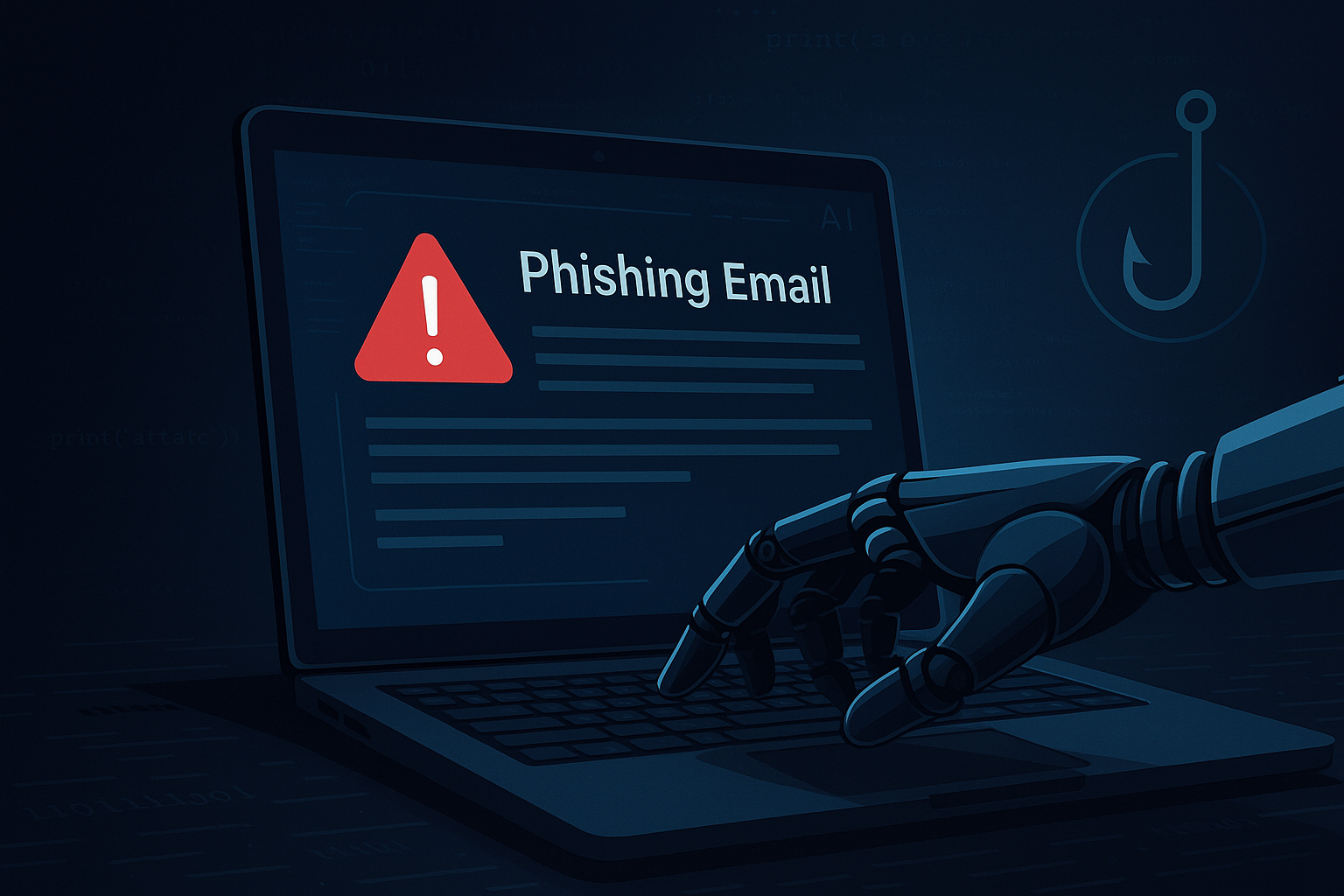🛡️ Rise of AI-Powered Phishing Attacks: What You Need to Know
Category: Technology
Tags: Cybersecurity, AI Security, Phishing, Social Engineering, Email Security, Business Email Compromise, AI Threats, Cyber Threats, InfoSec, Cyber Awareness, Spear Phishing, Identity Theft, AI in Cybercrime, Credential Theft, Multi-Factor Authentication, Zero Trust Security, Cyber Defense, Cyber Hygiene, Data Protection, AI-Powered Attacks
Posted on 2025-05-14T17:23:50.363068
As artificial intelligence (AI) becomes more integrated into our daily lives, cybercriminals are also embracing it to enhance their attack strategies. One alarming trend in 2025 is the rise of AI-powered phishing attacks — smarter, faster, and more convincing than ever before.
🎯 What Are AI-Powered Phishing Attacks?

Traditional phishing attacks use mass emails with generic messages to trick users into clicking malicious links or revealing sensitive data.
With AI, these attacks are now:
- Highly personalized (using scraped data from social media and past breaches)
- Well-written, with perfect grammar and tone-matching
- Dynamic, adapting in real-time to user behavior or responses
🤖 How AI Enhances Phishing Campaigns
AI tools like language models and image generators allow attackers to:
- Create realistic email content that mimics legitimate sources (banks, employers, service providers)
- Generate fake websites and forms that closely resemble official ones
- Automate social engineering on platforms like LinkedIn or WhatsApp
- Perform voice phishing (vishing) using cloned audio samples
🕵️ Real-World Example
In a recent campaign reported by cybersecurity firms, attackers used AI to:
- Scrape employee names and job titles from LinkedIn
- Craft personalized emails from fake HR domains
- Trick users into logging into a fake Office 365 login page
- Capture credentials and use them to launch internal spear-phishing attacks
This level of targeting and realism would’ve been too resource-intensive in the past — but AI makes it scalable and affordable.
⚠️ Risks and Impact
- Credential theft (email, VPN, banking)
- Business email compromise (BEC)
- Data leaks and ransomware deployment
- Loss of customer trust and reputational damage
🛡️ How to Defend Against AI-Powered Phishing
1. User Training
- Conduct phishing simulations regularly
- Teach staff to inspect URLs, sender domains, and file attachments
2. Email Security Tools
- Use email gateways with AI-based threat detection
- Enable DMARC, SPF, and DKIM to validate sender identity
3. Zero Trust Approach
- Limit access privileges
- Monitor for unusual login behavior and IP locations
4. Multi-Factor Authentication (MFA)
- Enforce MFA across all accounts to reduce damage from stolen passwords
5. Incident Response Readiness
- Have a rapid plan for credential resets, device isolation, and forensics
🔐 Final Thoughts
AI isn’t just powering innovation — it’s also fueling a new generation of cyber threats. Staying ahead means understanding how these technologies are used against us, and hardening both human and digital defenses.